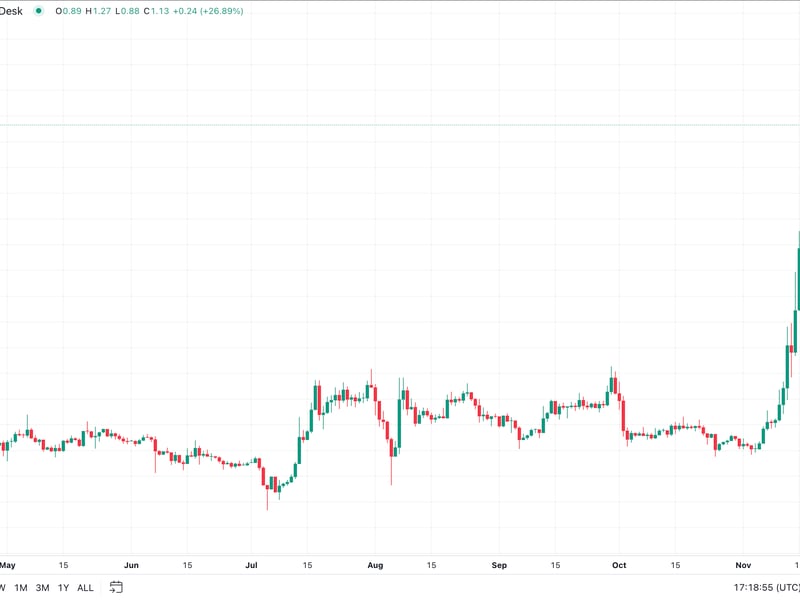Crypto’s Darkest Hour, and the Bright Day Ahead
Perhaps you haven’t noticed but crypto has become a laughingstock in respectable traditional finance, or TradFi, circles. We have transitioned from being the smart, nouveau riche kid at the party to being the clown in the corner, with questionable personal hygiene. The ongoing criminal trial of Sam Bankman-Fried cements this narrative and puts the clown front and center. But something we should all bear in mind is that it’s always darkest before dawn, so how do we move into a new cycle of growth and optimism?
The answer is a combination of innovative technology, real-world asset adoption and the increasing involvement of grown-up institutions.
You’re reading Crypto Long & Short, our weekly newsletter featuring insights, news and analysis for the professional investor. Sign up here to get it in your inbox every Wednesday.
Let’s get one thing out of the way: Salvation will not come from a bitcoin (BTC) spot ETF. If you think BlackRock selling a few ETFs on centralized exchanges is the answer, then you are asking the wrong question; crypto tokens over TradFi rails is not “the future of finance.” There is a deep irony in the fact that while JPMorgan carried out its first blockchain-based transactions with BlackRock and Barclays over its Ethereum-based Onyx blockchain, many crypto participants and speculators are still obsessing about an ETF.
We need a “blockchain first” mentality. It’s encouraging that recent partnerships between Chainlink and other financial institutions deliver on this premise, providing an example of the kind of meaningful innovation the industry needs. The Oracle service’s groundbreaking cross-chain interoperability protocol, or CCIP, technology will enable financial institutions to launch their own, private blockchains that interact with decentralized, public blockchains like Ethereum. Chainlink has announced projects with Swift, Google, ANZ and DTCC, among others. Indeed, this appears to be a highly plausible endgame for crypto – where financial institutions transition their rails to private blockchains used by retail and wholesale customers, while public, permissionless blockchains co-exist and provide alternative opportunities for more crypto-savvy users.
We should also remember how far we have traveled; those who do not believe financial rails can transition to blockchain should study why the transfer of value on blockchains via stablecoins surpassed both PayPal and Mastercard in 2022 (see the chart below).
:format(jpg)/cloudfront-us-east-1.images.arcpublishing.com/coindesk/BXYY2K6B5BBEXP7HABKWVBJ7FM.png)
We are also at the first innings of deploying real-world assets (RWAs) on the blockchain, opening out the potential for trillions of dollars of value to move on-chain. Already this year there has been over $3 billion worth of RWAs purchased through decentralized blockchains, which has created a series of cashflow-generating businesses with strong future prospects.
For example, MakerDAO, an OG of decentralized finance, or DeFi, has undergone something of a quiet revolution. Its revenues are now heavily driven by RWA yield rather than native crypto lending, as seen in the chart below. From a valuation perspective, this puts the protocol at an attractive price-to-earnings multiple of 18. Who said there is no value in crypto?!
:format(jpg)/cloudfront-us-east-1.images.arcpublishing.com/coindesk/XIRD3SPMKVGGLPIBKQGF4WZFZI.png)
It’s not just financial assets like real estate and government bonds that could be moved on-chain, but also whole industries like music and film royalties can benefit from transparency, fractionalization, wider access and fewer middlemen. Even the promise of “SocialFi” is enticing – a decentralized, transparent world of social media where users own their own data and identity, and are not beholden to the daily whims of Zuck or Elon. Base’s Friendtech, which has generated over $40 million in fees in less than 3 months of existence, may be the first iteration of this.
There really is a crypto future worth fighting for if we can just leave the clown outfit at the door.
Edited by Nick Baker.









